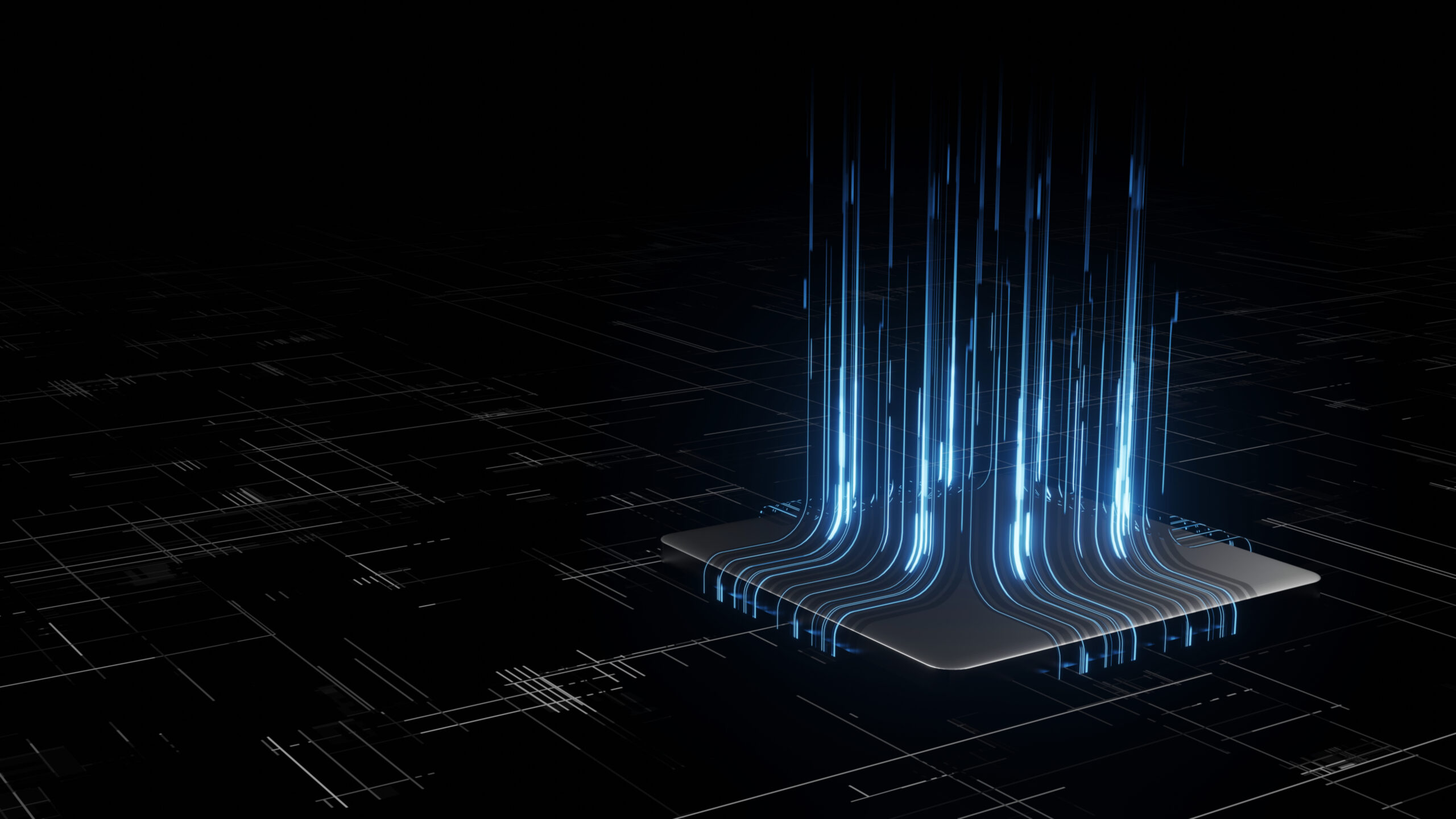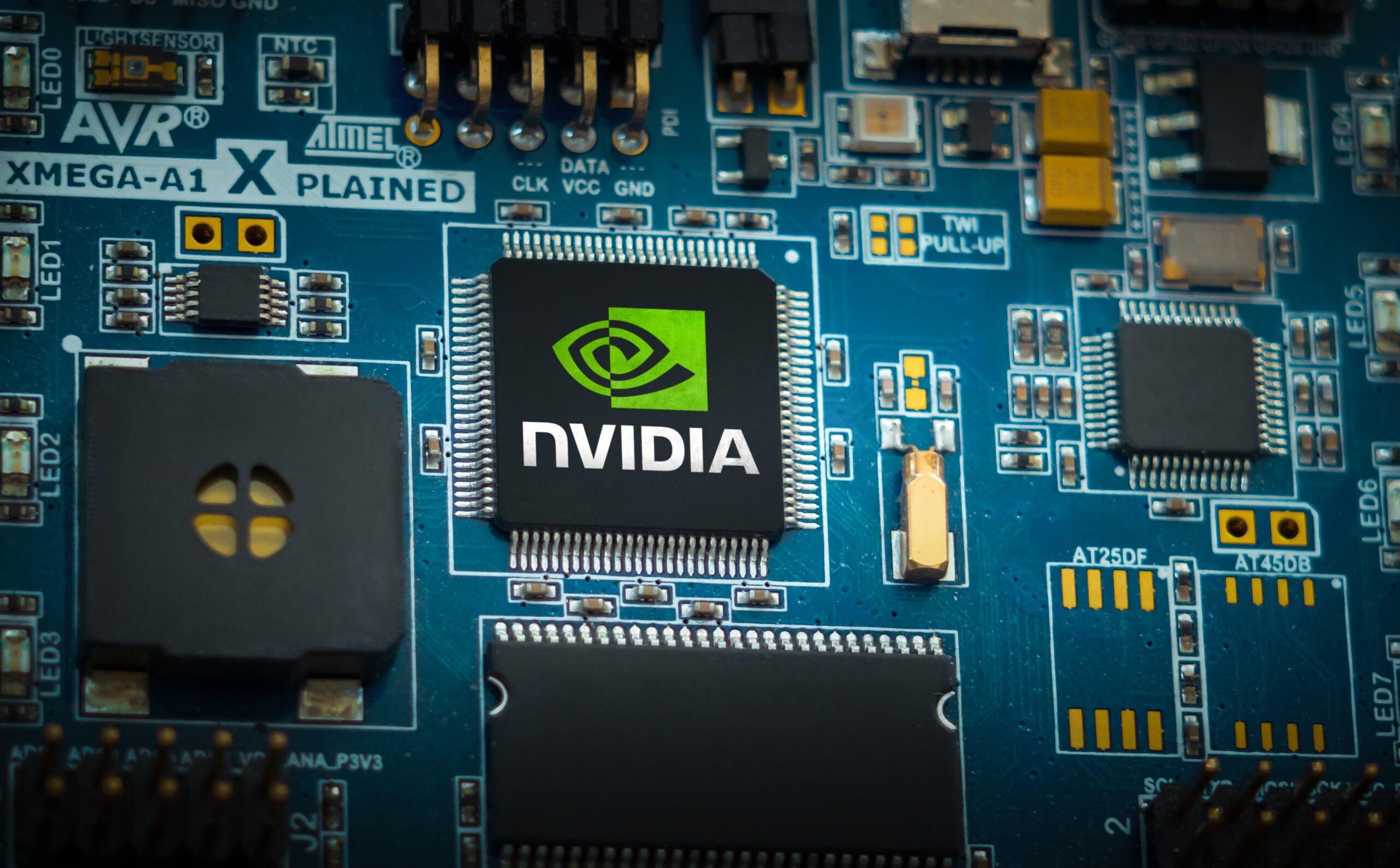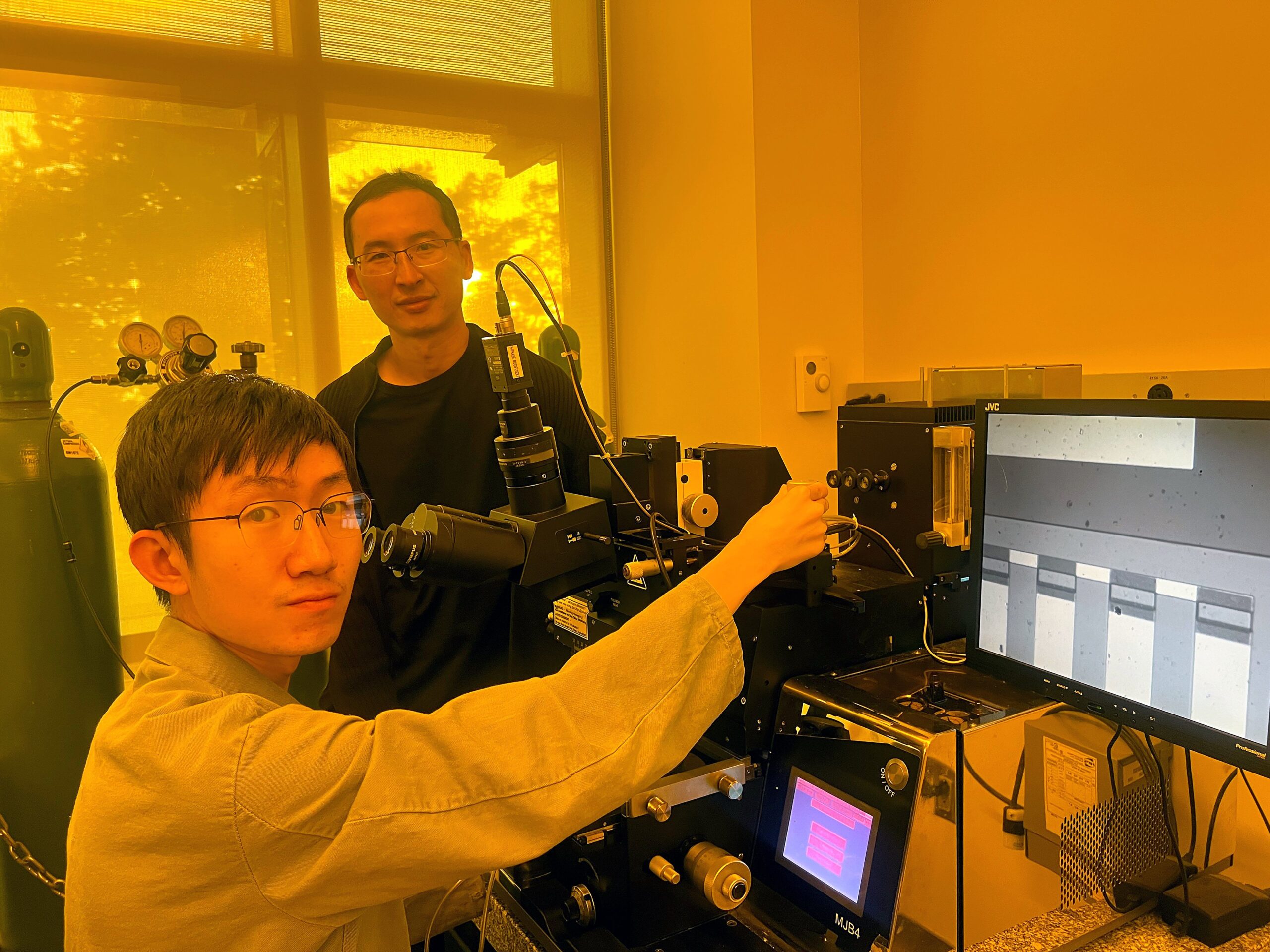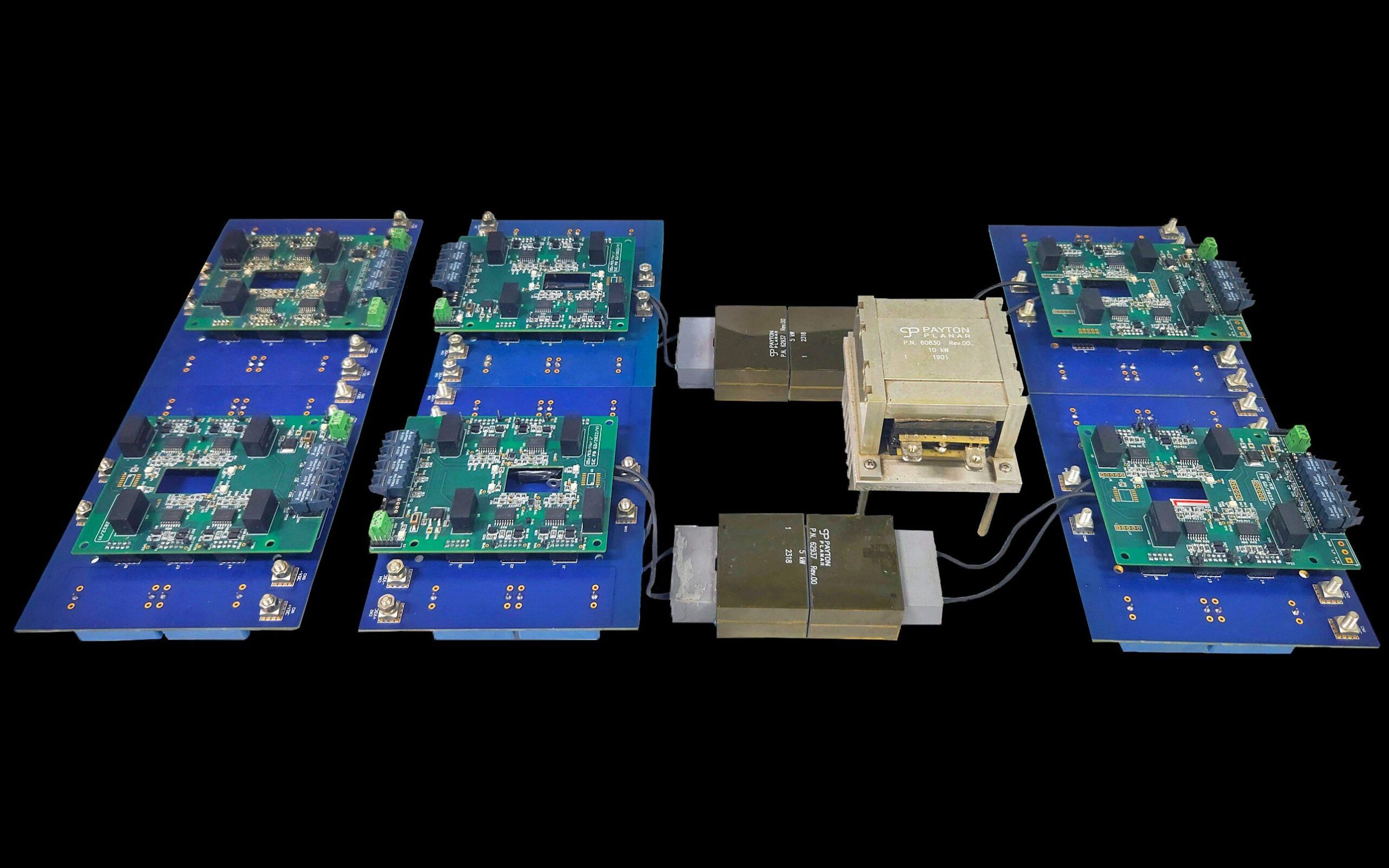To find a brief definition of the networking term you are looking for user your browser’s “Find” feature then follow links to a fuller explanation.
AI data center
AI data centers are designed, built, and optimized to meet the demands of workloads created by the rise of artificial intelligence. AI data centers go beyond the capabilities of traditional data centers and feature high-density compute racks packed with accelerators like GPUs and TPUs. Given this, AI data centers require significantly advanced power, liquid cooling, and high-bandwidth, low-latency networking infrastructure to handle data workloads and large language models (LLMs) for AI model training and inference. In short, AI data centers built for scale, efficiency, and the demands AI applications.
AI networking
AI networking refers to the application of artificial intelligence (AI) technologies to network management and optimization. It involves using AI algorithms and machine learning techniques to analyze network data, identify patterns and make intelligent decisions to improve network performance, security and efficiency.
AIOps
AIOps, (AI for IT operations) refers to the application of AI and machine learning technologies to automate and improve the management and operations of IT systems, particularly in networking. By analyzing vast amounts of data generated by network devices, applications, and users, AIOps leverages AI/ML algorithms to identify and resolve issues, automate routine tasks, enhance network visibility, and improve overall operational efficiency. This enables IT teams to shift their focus from reactive problem-solving to proactive maintenance and strategic initiatives.
AI server
An AI server is a specialized computing system designed to handle demanding tasks required for artificial intelligence (AI) applications. AI servers are optimized with advanced hardware and software components to process large amounts of data and execute complex algorithms. An AI server relies on high-performance CPUs and GPUs, such as those from Nvidia, to handle complex computations, large memory capacity to store and process large datasets, fast storage solutions like SSDs for quick data access, and advanced networking capabilities to move data for AI workloads. AI servers are used for training and deploying machine learning models, executing neural networks for tasks like image and speech recognition, analyzing and understanding human language, and processing and analyzing large datasets.https://www.networkworld.com/article/3999424/backup-as-a-service-explained-your-guide-to-cloud-data-protection.html
Backup-as-a-service (BaaS)
Backup-as-a-service (BaaS) is a managed service where a third-party provider stores an organization’s data in the cloud. BaaS is considered well-suited for enterprises looking for A cost-effective way to protect critical assets. As opposed TO backups on-premises — which can require significant infrastructure investments — a BaaS provider maintains backup infrastructure and stores data in a public, private or hybrid cloud environment. Data is continuously backed up, secure and recoverable in the event of an outage, failure or cybersecurity event.
5G
5G is fast cellular wireless technology for enterprise IoT, IIoT, and phones that can boost wireless throughput by a factor of 10.
Private 5G
Private 5G: a dedicated mobile network built and operated within a private environment, such as a business campus, factory or stadium. Unlike public 5G networks, which are shared by multiple users, private 5G networks are exclusively used by a single organization or entity. While private 5G offers significant advantages, it requires specialized expertise and investment to build and manage.
Network slicing
Network slicing can make efficient use of carriers’ wireless capacity to enable 5G virtual networks that exactly fit customer needs.
Open RAN (O-RAN)
O-RAN is a wireless-industry initiative for designing and building 5G radio access networks using software-defined technology and general-purpose, vendor-neutral hardware.
Beamforming
Beamforming is a technique that focuses a wireless signal towards a specific receiving device rather than have the signal spread in all directions as with a broadcast antenna. The resulting connection is faster and more reliable than it would be without beamforming.
Backup-as-a-service
Cloud computing
Virtual private cloud
A virtual private cloud (VPC) lets you create your own private network within the larger public cloud, combining the security of a private cloud with the flexibility of a public cloud.
A VPC is essentially a logically isolated portion of a public cloud environment. It allows you to provision a private cloud-like space within a shared public cloud infrastructure. It provides a level of isolation, so your resources are separated from other users of the public cloud.It gives you control over your virtual networking environment, including things like IP addresses, subnets, and security settings. It retains the benefits of the public cloud, such as scalability and on-demand resources.
Multicloud
Multicloud refers to using cloud services from multiple public cloud providers. Rather than relying on a single vendor, organizations distribute their workloads and applications across platforms like Amazon Web Services (AWS), Microsoft Azure, Google Cloud Platform (GCP), and others.
This approach aims to avoid vendor lock-in, enhance resilience, and leverage the specific strengths of each provider. For example, a company might use AWS for its infrastructure, Azure for its enterprise software integration, and GCP data analytics capabilities. Multicloud strategies also allow for geographic distribution of resources, optimizing performance and ensuring compliance with regional regulations.
While offering significant advantages, multicloud environments introduce complexity in management, security, and interoperability, requiring careful planning and orchestration.
Multicloud networking services (MCNS)
Multicloud networking services (MCNS) are designed to provide a unified approach to managing connectivity, security, and visibility across two or more public cloud environments (e.g., Microsoft Azure, Amazon Web Services, and Google Cloud). Instead of treating each cloud as a siloed network, these services offer a centralized control plane and often a set of network and security functionalities.
This allows organizations to establish consistent policies, streamline operations, and improve application performance regardless of where workloads reside. Key capabilities often include inter-cloud connectivity, unified security policies, centralized monitoring and analytics, and simplified routing and traffic management, ultimately aiming to reduce complexity and enhance agility in multicloud deployments.
Leading vendors include Aviatrix, Alkira, Prosimo, F5/Volterra, Cisco, VMware by Broadcom, Juniper, Equinix, Arrcus, DriveNets, and Cohesive Networks.
Neo cloud
Neo cloud is a relatively new cloud computing term. It describes a breed of specialized cloud providers built specifically for artificial intelligence and high-performance computing workloads.
Unlike traditional hyperscale cloud providers like AWS, Azure, Google Cloud that offer general-purpose services, neo clouds are built to deliver raw, scalable computing power, especially using GPUs. These GPUs are essential for computationally intensive tasks like training large language models (LLMs), machine learning, real-time rendering, and complex scientific simulations.
Neo clouds often aim to provide access to high-end GPUs at more competitive prices than hyperscalers for large-scale AI tasks. This is partly because they don’t have the overhead of maintaining a massive infrastructure.
Neo clouds don’t replace hyperscalers, but rather provide complementary services. For example, an enterprise may continue to use hyperscalers for their core IT infrastructure while deploying neo clouds for their AI-intensive training and development needs.
Private cloud
A private cloud offers the benefits of cloud computing — like scalability and flexibility — but in a more controlled and secure environment. In essence, a private cloud is a cloud computing environment dedicated to a single organization. Characteristics of private cloud include the following:
Single-tenant environment: Unlike a public cloud where resources are shared, a private cloud is used exclusively by one organization.
Dedicated resources: Hardware and software are dedicated to that organization, whether it’s on-premises or hosted by a third-party.
Increased security: A private cloud offers greater control over infrastructure and enhanced security due to the dedicated nature of the resources.
A private cloud can be phyically located in your data center (on-premises) or at hosted private cloud where the provider hosts the private cloud. However, it’s still dedicated to single organization.
Data center
Data centers are physical facilities that enterprises use to house business-critical applications and information and which are evolving from centralized, on-premises facilities to edge deployments and public-cloud services.
Power usage effectiveness (PUE)
Power usage effectiveness (PUE) is metric that measures the energy efficiency of a data center.
Data center automation
Data center automation is the process of using technology to automate routine data center tasks and workflows. By leveraging software and automation tools, data center operators can streamline operations, reduce human error, improve efficiency and enhance overall performance. Areas where data center automation is often deployed include provisioning, monitoring, network orchestration and maintenance. Benefits of data center automation to benefits such as increased efficiency, reduced costs, improved reliability, enhanced scalability and improved security. Data center automation can be implemented using scripting languages (e.g., Python, PowerShell), automation platforms (e.g., Ansible, Puppet, Chef), and cloud-based management tools.
Data center infrastructure management
Data center infrastructure management (DCIM) is a comprehensive approach to managing all aspects of a data center, encompassing both IT equipment and supporting infrastructure. It’s a holistic system that helps data center operators keep their facilities running efficiently and effectively.
DCIM provides a centralized platform for managing all aspects of a data center, enabling operators to make informed decisions, optimize performance, and ensure the reliable operation of their critical infrastructure.
Here’s what DCIM does:
- Monitoring: DCIM tools provide real-time visibility into the data center environment, tracking metrics like power consumption, temperature, humidity, and equipment status.
- Management: DCIM enables administrators to control and manage various aspects of the data center, including power distribution, cooling systems, and IT assets.
- Planning: DCIM facilitates capacity planning, helping data center operators understand current resource utilization and forecast future needs.
- Optimization: DCIM helps identify areas for improvement in energy efficiency, resource allocation, and overall operational efficiency.
Data center sustainability
Data center sustainability is the practice of designing, building and operating data centers in a way that minimizes their environmental by reducing energy consumption, water usage and waste generation, while also promoting sustainable practices such as renewable energy and efficient resource management.
Hyperconverged infrastructure (HCI)
Hyperconverged infrastructure combines compute, storage and networking in a single system and is used frequently in data centers. Enterprises can choose an appliance from a single vendor or install hardware-agnostic hyperconvergence software on white-box servers.
Edge computing
Edge computing is a distributed computing architecture that brings computation and storage closer to the sources of data. That is, instead of sending all data to a centralized cloud or data center, processing occurs at or near the edge of the network, where devices like sensors, IoT devices, or local servers are located to process, analyze and retain the data. In short, it’s about processing data closer to where it’s generated, which is designed to minimize latency, reduce bandwidth usage,and enable real-time responses.
Edge AI
Edge AI is the deployment and execution of artificial intelligence (AI) algorithms on edge devices or local servers, rather than relying solely on cloud-based, more centralized, AI processing. This involves running machine learning models and AI applications directly on devices at the edge of the network. Some key aspects of edge AI include the following:
- Local processing: AI calculations happen on the device.
- Reduced latency: Faster responses due to not sending all data to a data center or cloud.
- Privacy: Sensitive data can be processed locally.
- Offline capabilities: AI functions can work even without constant internet connectivity.
Think of edge computing as the infrastructure and edge AI as the intelligence at the edge of the network.
Firewall
Network firewalls were created as the primary perimeter defense for most organizations, but since its creation the technology has spawned many iterations: proxy, stateful, Web app, next-generation.
Next-generation firewall (NGFW)
Next-generation firewalls defend network perimeters and include features to inspect traffic at a fine level including intrusion prevention systems, deep-packet inspection, and SSL inspection all integrated into a single system.
Infiniband
Infiniband is a highly specialized technology, Infiniband’s performance and scalability make it a valuable tool for organizations that require the highest levels of network performance. The high-performance interconnect technology designed to provide low-latency, high-bandwidth communication between servers, storage devices, and other high-performance computing (HPC) components. It’s particularly well-suited for applications that require rapid data transfer, such as scientific computing, financial modeling and video rendering. Infiniband is commonly used for HPC clusters, data centers, supercomputers and scientific research.
Ethernet
Ethernet is one of the original networking technologies and was invented 50 years ago. Despite its age, the communications protocol can be deployed and incorporate modern advancements without losing backwards compatibility, Ethernet continues to reign as the de facto standard for computer networking. As artificial intelligence (AI) workloads increase, network industry giants are teaming up to ensure Ethernet networks can keep pace and satisfy AI’s high performance networking requirements. At its core, Ethernet is a protocol that allows computers (from servers to laptops) to talk to each other over wired networks that use devices like routers, switches and hubs to direct traffic. Ethernet works seamlessly with wireless protocols, too.
Internet
The internet is a global network of computers using internet protocol (IP) to communicate globally via switches and routers deployed in a cooperative network designed to direct traffic efficiently and to provide resiliency should some part of the internet fail.
Internet backbone
Tier 1 internet service providers (ISP) mesh their high-speed fiber-optic networks together to create the internet backbone, which moves traffic efficiently among geographic regions.
IP address
An IP address is a unique set of numbers or combination of letters and numbers that are assigned to each device on an IP network to make it possible for switches and routers to deliver packets to the correct destinations.
PaaS, NaaS, IaaS and IDaaS
Platform as a service (PaaS): In PaaS, a cloud provider delivers a platform for developers to build, run and manage applications. It includes the operating system, programming languages, database and other development tools. This allows developers to focus on building applications without worrying about the underlying infrastructure.
Network as a service (NaaS): NaaS is a cloud-based service that provides network infrastructure, such as routers, switches and firewalls, as a service. This allows organizations to access and manage their network resources through a cloud-based platform.
Infrastructure as a service (IaaS): IaaS provides the building blocks of cloud computing — servers, storage and networking. This gives users the most control over their cloud environment, but it also requires them to manage the operating system, applications, and other components.
Identity as a service (IDaaS): providers maintain cloud-based user profiles that authenticate users and enable access to resources or applications based on security policies, user groups, and individual privileges. The ability to integrate with various directory services (Active Directory, LDAP, etc.) and provide single sign-on across business-oriented SaaS applications is essential.
Internet of things (IoT)
The internet of things (IoT) is a network of connected smart devices providing rich operational data to enterprises. It is a catch-all term for the growing number of electronics that aren’t traditional computing devices, but are connected to the internet to to gather data, receive instructions or both.
Industrial internet of things (IIoT)
The industrial internet of things (IIoT) connects machines and devices in industries. It is the application of instrumentation and connected sensors and other devices to machinery and vehicles in the transport, energy and manufacturing sectors.
Industry 4.0
Industry 4.0 blends technologies to create custom industrial solutions that make better use of resources. It connects the supply chain and the ERP system directly to the production line to form integrated, automated, and potentially autonomous manufacturing processes that make better use of capital, raw materials, and human resources.
IoT standards and protocols
There’s an often-impenetrable alphabet soup of protocols, standards and technologies around the Internet of Things, and this is a guide to essential IoT terms.
Narrowband IoT (NB-IoT)
NB-IoT is a communication standard designed for IoT devices to operate via carrier networks, either within an existing GSM bandwidth used by some cellular services, in an unused “guard band” between LTE channels, or independently.
IP
Internet protocol (IP) is the set of rules governing the format of data sent over IP networks.
DHCP
DHCP stands for dynamic host-configuration protocol, an IP-network protocol used for a server to automatically assign networked devices with IP addresses on the fly and and share other information to those devices so they can communicate efficiently with other endpoints.
DNS
The Domain Name System (DNS) resolves the common names of Web sites with their underlying IP addresses, adding efficiency and even security in the process.
IPv6
IPv6 is the latest version of internet protocol that identifies devices across the internet so they can be located but also can handle packets more efficiently, improve performance and increase security.
IP address
An IP address is a number or combination of letters and numbers used to label devices connected to a network on which the Internet Protocol is used as the medium for communication. IP addresses give devices on IP networks their own identities so they can find each other.
Network management
Network management is the process of administering and managing computer networks.
Intent-based networking
Intent-based networking (IBNS) is network management that gives network administrators the ability to define what they want the network to do in plain language, and having a network-management platform automatically configure devices on the network to create the desired state and enforce policies.
Microsegmentation
Microsegmentation is a way to create secure zones in networks, in data centers, and cloud deployments by segregating sections so only designated users and applications can gain access to each segment.
Software-defined networking (SDN)
Software-defined networking (SDN) is an approach to network management that enables dynamic, programmatically efficient network configuration in order to improve network performance and monitoring. It operates by separating the network control plane from the data plane, enabling network-wide changes without manually reconfiguring each device.
Network security
Network security consists of the policies, processes, and practices adopted to prevent, detect, and monitor unauthorized access, misuse, modification, or denial of service on a computer network and network-accessible resources.
Identity-based networking
Identity-based networking ties a user’s identity to the networked services that user can receive.
Microsegmentation
Microsegmentation is a way to create secure zones in networks, in data centers, and cloud deployments by segregating sections so only designated users and applications can gain access to each segment.
Network access control (NAC)
Network Access Control is an approach to computer security that attempts to unify endpoint-security technology, user or system authentication, and network security enforcement.
SASE
Secure access service edge (SASE) is a network architecture that rolls software-defined wide area networking (SD-WAN) and security into a cloud service that promises simplified WAN deployment, improved efficiency and security, and to provide appropriate bandwidth per application. SASE, a term coined by Gartner in 2019, offers a comprehensive solution for securing and optimizing network access in today’s hybrid work environment. Its core elements include the following:
Secure web gateway (SWG): Filters and inspects web traffic, blocking malicious content and preventing unauthorized access to websites.
Cloud access security broker (CASB): Enforces security policies and controls for cloud applications, protecting data and preventing unauthorized access.
Zero trust network access (ZTNA): Grants access to applications based on user identity and device posture, rather than relying on network location.
Firewall-as-a-service (FWaaS): Provides a cloud-based firewall that protects networks from threats and unauthorized access.
Unified management: A centralized platform for managing and monitoring both network and security components.
Automation: Automated workflows and policies to simplify operations and improve efficiency.
Analytics: Advanced analytics to provide insights into network and security performance.
Multivendor SASE
Refers to a SASE platform that is provided by multiple vendors. This means you’d source that different components of the SASE platform, such as the secure web gateway (SWG), cloud access security broker (CASB), and zero-trust network access (ZTNA) from different vendors. This allows you to choose the best-of-breed solutions for each component of the platform. By using multivendor SASE platform, you avoid being tied to a single vendor and reduce the risk of vendor lock-in. On the negative side, managing multiple vendors is time-consuming than managing a single-vendor solution. Also, issues among vendors can impact the performance, efficiency and reliability of the SASE solution.
Single-vendor SASE
Single-vendor SASE refers to a solution that is provided by a single vendor. This means that all of the components of the SASE platform, such as the secure web gateway (SWG), cloud access security broker (CASB), and zero-trust network access (ZTNA) are delivered by a single vendor. Advantages of single-vendor SASE include simplified management, smoother integration and enhanced support. Disadvantages include vendor lock-in, more limited capabilities compared to multivendor platforms, and higher costs for large organizations.
Network switch
A network switch is a device that operates at the Data Link layer of the OSI model — Layer 2. It takes in packets being sent by devices that are connected to its physical ports and sends them out again, but only through the ports that lead to the devices the packets are intended to reach. They can also operate at the network layer — Layer 3 where routing occurs.
Open systems interconnection (OSI) reference model
Open Systems Interconnection (OSI) reference model is a framework for structuring messages transmitted between any two entities in a network.
Power over Ethernet (PoE)
PoE is the delivery of electrical power to networked devices over the same data cabling that connects them to the LAN. This simplifies the devices themselves by eliminating the need for an electric plug and power converter, and makes it unnecessary to have separate AC electric wiring and sockets installed near each device.
Routers
A router is a networking device that forwards data packets between computer networks. Routers operate at Layer 3 of the OSI model and perform traffic-directing functions between subnets within organizations and on the internet.
Border-gateway protocol (BGP)
Border Gateway Protocol is a standardized protocol designed to exchange routing and reachability information among the large, autonomous systems on the internet.
UDP port
UDP (User Datagram Protocol) is a communications protocol primarily used for establishing low-latency and loss-tolerant connections between applications on the internet. It speeds up transmissions by enabling the transfer of data before the receiving device agrees to the connection.
Storage networking
Storage networking is the process of interconnecting external storage resources over a network to all connected computers/nodes.
Network attached storage (NAS)
Network-attached storage (NAS) is a category of file-level storage that’s connected to a network and enables data access and file sharing across a heterogeneous client and server environment.
Non-volatile memory express (NVMe)
A communications protocol developed specifically for all-flash storage, NVMe enables faster performance and greater density compared to legacy protocols. It’s geared for enterprise workloads that require top performance, such as real-time data analytics, online trading platforms, and other latency-sensitive workloads.
Solid-state drive (SSD)
Solid-solid drives, or an SSD, are storage device that uses flash memory to store data. Unlike traditional hard disk drives (HDDs), SSDs have no moving parts, making them faster, more reliable, and quieter.
Storage-area network (SAN)
A storage-area network (SAN) is a dedicated, high-speed network that provides access to block-level storage. SANs were adopted to improve application availability and performance by segregating storage traffic from the rest of the LAN.
Tensor processing unit (TPU)
A tensor processing unit (TPU) is a integrated circuit developed by Google for accelerating machine learning workloads. Unlike general-purpose CPUs or graphics processing units (GPUs), TPUs are designed and optimized specifically to handle the massive matrix multiplication and vector operations that are fundamental to neural networks and other machine learning algorithms.
While both TPUs and GPUs are used to accelerate AI, they have different design philosophies:
TPUs are optimized for massive, high-throughput machine learning tasks. They excel at inference and training large models.
GPUs are more versatile and programmable. While also excellent for parallel processing, they are not exclusively for machine learning and are widely used for computer graphics, scientific computing, and general-purpose parallel programming.
Virtualization
Virtualization is the creation of a virtual version of something, including virtual computer hardware platforms, storage devices, and computer network resources. This includes virtual servers that can co-exist on the same hardware, but behave separately.
Containerization
Containerization (e.g., Docker, Kubernetes) refers to a form of virtualization at the operating-system level. That is, rather than virtualizing hardware, containers virtualize the operating system itself. All containers on a single host share the same underlying OS kernel. Each container bundles only the application code, its runtime, system tools, libraries, and settings. This makes them much smaller and faster to start than virtual machines VMs. They provide isolation at the process and filesystem level, running in isolated “user spaces.”
Hypervisor
A hypervisor is software that separates a computer’s operating system and applications from the underlying physical hardware, allowing the hardware to be shared among multipe virtual machines.
Network virtualizaton
Network virtualization is the combination of network hardware and software resources with network functionality into a single, software-based administrative entity known as a virtual network. Network virtualization involves platform virtualization, often combined with resource virtualization.
Network function virtualization (NFV)
Network functions virtualization (NFV) uses commodity server hardware to replace specialized network appliances for more flexible, efficient, and scalable services.
Application-delivery controller (ADC)
An application delivery controller (ADC) is a network component that manages and optimizes how client machines connect to web and enterprise application servers. In general, a ADC is a hardware device or a software program that can manage and direct the flow of data to applications.
Virtual machine (VM)
A virtual machine (VM) is software that runs programs or applications without being tied to a physical machine. In a VM instance, one or more guest machines can run on a physical host computer.
VLAN
A virtual LAN (VLAN) allows network administrators to logically segment a single physical LAN into multiple distinct broadcast domains. In simpler terms, a VLAN lets you group devices together as if they were on a separate network, even if those devices are connected to the same physical network switch or to different switches across a building or campus.
Traditionally, a LAN segments traffic using physical network segments, where each segment is a separate broadcast domain. Any device on that segment can hear broadcast traffic from other devices on the same segment. VLANs break this physical constraint. When a VLAN is configured on a switch, ports on that switch are assigned to specific VLAN IDs. Traffic from devices connected to ports in one VLAN cannot directly communicate with devices in another VLAN, unless a Layer 3 device (like a router or a Layer 3 switch) is used to route traffic between them.
This logical segmentation is achieved by adding a tag to the Ethernet frames as they traverse the network. This tag identifies which VLAN the frame belongs to, allowing switches to keep traffic within its assigned VLAN.
VPN (virtual private network)
A virtual private network can create secure remote-access and site-to-site connections inexpensively, are a stepping stone to software-defined WANs, and are proving useful in IoT.
Split tunneling
Split tunneling is a device configuration that ensures that only traffic destined for corporate resources go through the organization’s internet VPN, with the rest of the traffic going outside the VPN, directly to other sites on the internet.
WAN
A WAN or wide-area network, is a network that uses various links—private lines, Multiprotocol Label Switching (MPLS), virtual private networks (VPNs), wireless (cellular), the Internet — to connect organizations’ geographically distributed sites. In an enterprise, a WAN could connect branch offices and individual remote workers with headquarters or the data center.
Data deduplication
Data deduplication, or dedupe, is the identification and elimination of duplicate blocks within a dataset, reducing the amount of traffic that must go on WAN connections. Deduplication can find redundant blocks of data within files from different directories, different data types, even different servers in different locations.
MPLS
Multi-protocol label switching (MPLS) is a packet protocol that ensures reliable connections for real-time applications, but it’s expensive, leading many enterprises to consider SD-WAN as a means to limit its use.
SASE
Secure access service edge (SASE) is a network architecture that rolls software-defined wide area networking (SD-WAN) and security into a cloud service that promises simplified WAN deployment, improved efficiency and security, and to provide appropriate bandwidth per application. SASE, a term coined by Gartner in 2019, offers a comprehensive solution for securing and optimizing network access in today’s hybrid work environment. Its core elements include the following:
Secure web gateway (SWG): Filters and inspects web traffic, blocking malicious content and preventing unauthorized access to websites.
Cloud access security broker (CASB): Enforces security policies and controls for cloud applications, protecting data and preventing unauthorized access.
Zero trust network access (ZTNA): Grants access to applications based on user identity and device posture, rather than relying on network location.
Firewall-as-a-service (FWaaS): Provides a cloud-based firewall that protects networks from threats and unauthorized access.
Unified management: A centralized platform for managing and monitoring both network and security components.
Automation: Automated workflows and policies to simplify operations and improve efficiency.
Analytics: Advanced analytics to provide insights into network and security performance.
SD-WAN
Software-defined wide-area networks (SD-WAN) is sofware that can manage and enforce the routing of WAN traffic to the appropriate wide-area connection based on policies that can take into consideration factors including cost, link performance, time of day, and application needs based on policies. Like its bigger technology brother, software-defined networking, SD-WAN decouples the control plane from the data plane.
VPN
Virtual private networks (VPNs) can create secure remote-access and site-to-site connections inexpensively, can be an option in SD-WANs, and are proving useful in IoT.
Wi-Fi
Wi-Fi refers to the wireless LAN technologies that utilize the IEEE 802.11 standards for communications. Wi-Fi products use radio waves to transmit data to and from devices with Wi-Fi software clients to access points that route the data to the connected wired network..
802.11ad
802.11ad is an amendment to the IEEE 802.11 wireless networking standard, developed to provide a multiple gigabit wireless system standard at 60 GHz frequency, and is a networking standard for WiGig networks.
802.11ay
802.11ay is a proposed enhancement to the current (2021) technical standards for Wi-Fi. It is the follow-up to IEEE 802.11ad, quadrupling the bandwidth and adding MIMO up to 8 streams. It will be the second WiGig standard.
802.11ax (Wi-Fi 6)
802.11ax, officially marketed by the Wi-Fi Alliance as Wi-Fi 6 and Wi-Fi 6E, is an IEEE standard for wireless local-area networks and the successor of 802.11ac. It is also known as High Efficiency Wi-Fi, for the overall improvements to Wi-Fi 6 clients under dense environments.
Access point
An access point is networking device that allows wireless-capable devices to connect to a wired network. Access points typically create a wireless local area network (WLAN) using Wi-Fi standards.
Wi-Fi 6E
Wi-Fi 6E is an extension of Wi-Fi 6 unlicensed wireless technology operating in the 6GHz band, and it provides lower latency and faster data rates than Wi-Fi 6. The spectrum also has a shorter range and supports more channels than bands that were already dedicated to Wi-Fi, making it suitable for deployment in high-density areas like stadiums.
Beamforming
Beamforming is a technique that focuses a wireless signal towards a specific receiving device, rather than having the signal spread in all directions from a broadcast antenna, as it normally would. The resulting more direct connection is faster and more reliable than it would be without beamforming.
Controllerless Wi-Fi
It’s no longer necessary for enterprises to install dedicated Wi-Fi controllers in their data centers because that function can be distributed among access points or moved to the cloud, but it’s not for everybody.
MU-MIMO
MU-MIMO stands for multi-user, multiple input, multiple output, and is wireless technology supported by routers and endpoint devices. MU-MIMO is the next evolution from single-user MIMO (SU-MIMO), which is generally referred to as MIMO. MIMO technology was created to help increase the number of simultaneous users a singel access point can support, which was initially achieved by increasing the number of antennas on a wireless router.
OFDMA
Orthogonal frequency-division multiple-access (OFDMA) provides Wi-Fi 6 with high throughput and more network efficiency by letting multiple clients connect to a single access point simultaneously.
Wi-Fi 6 (802.11ax)
802.11ax, officially marketed by the Wi-Fi Alliance as Wi-Fi 6 and Wi-Fi 6E, is an IEEE standard for wireless local-area networks and the successor of 802.11ac. It is also known as High Efficiency Wi-Fi, for the overall improvements to Wi-Fi 6 clients under dense environments.
Wi-Fi 7
Wi-Fi 7 is currently the leading edge of wireless internet standards, providing more bandwidth, lower latency and more resiliency than prior standards. A year ago, there was some speculation that 2024 would be the breakout year for Wi-Fi 7. While some Wi-Fi 7 gear began to emerge in 2024, it looks like 2025 will be the year for Wi-Fi 7 rollouts.
Wi-Fi standards and speeds
Ever-improving Wi-Fi standards make for denser, faster Wi-Fi networks.
WPA3
The WPA3 Wi-Fi security standard tackles WPA2 shortcomings to better secure personal, enterprise, and IoT wireless networks.
Zero trust
Zero trust is security model based on the principle of “never trust, always verify.” It assumes that no user, device, or application, whether inside or outside the network, should be trusted by default. Access is granted only after authentication and authorization, based on context and least privilege.
Zero-water cooling
Zero-water cooling refers to various cooling technologies designed to eliminate or substantially reduce the amount of fresh water used for cooling purposes in data centers and power plants.
The goal of zero-watering cooling is to achieve a near-zero water usage effectiveness (WUE), a metric that measures water consumed for cooling against energy consumed by IT equipment.
The technology is critical because a typical hyperscale data center can evaporate more than a million liters of water a day. Zero-water cooling addresses this by significantly reducing or eliminating the dependency on local water supplies, making it a critical sustainability goal for industries in water-stressed regions.








 Surjakanta Mazumder, Saichand Kasicheyanula, Harisyam P.V., and Kaushik Basu hold their SST prototype in a lab.
Surjakanta Mazumder, Saichand Kasicheyanula, Harisyam P.V., and Kaushik Basu hold their SST prototype in a lab.